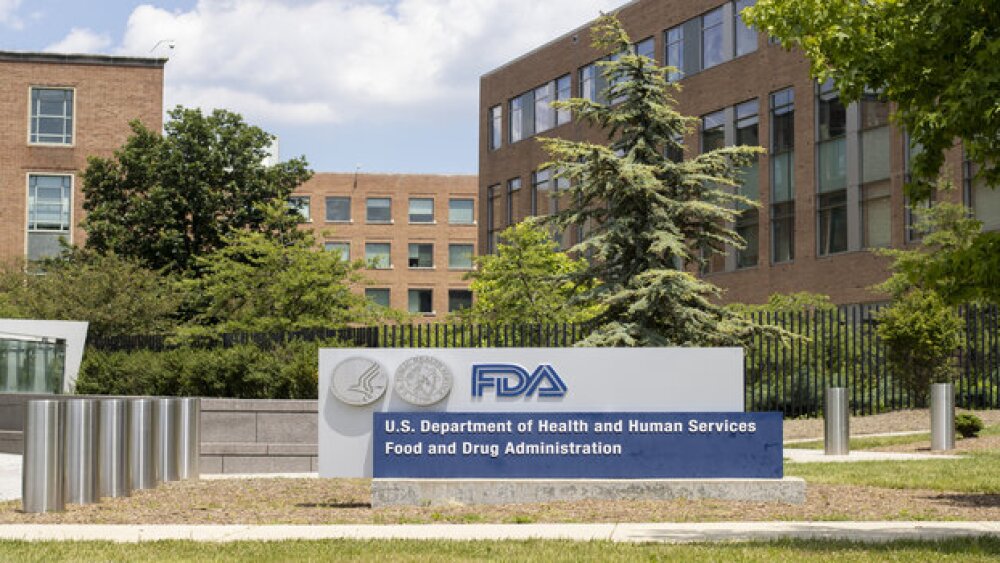With manufacturing issues persisting, last year’s shortages of medicines, including chemotherapies, weight-loss drugs and antibiotics, will continue into 2024.
Pictured: Pill Collage/Taylor Tieden for BioSpace
The FDA continues to face challenges in its oversight of drug manufacturing plants overseas due to disruptions related to the COVID-19 pandemic and staff vacancies, according to a report from the U.S. Government Accountability Office published Tuesday.
“GAO has had long-standing concerns about FDA’s ability to oversee the increasingly global drug supply chain,” read the report summary, which acknowledged that the FDA is working to address the issues.
It’s not the first time the GAO has raised the issue. The concern reiterated in this week’s report comes as the healthcare industry is still grappling with significant drug shortages, many of which were triggered or exacerbated by issues with international manufacturing facilities.
The situation is also still on the minds of those in Congress as the House Ways and Means Committee held a hearing on Tuesday examining drug shortages in the U.S. Chairman Rep. Jason Smith (R-MO) said that active drug shortages are at the “highest levels” since 2014 and that over half of the drugs that are in shortage have been limited in their availability for at least two years.
Michael Ganio, senior director of pharmacy practice and quality at the American Society of Health-System Pharmacists (ASHP), told BioSpace that the organization is currently tracking over 300 drug shortages—close to a 10-year high.
While new manufacturers are coming online and President Biden has made clear his intentions to fortify the supply chains through government action, experts agree that shortages may persist for some time.
“The generics market is in crisis, and it would not be surprising to see more shortages due to product discontinuations caused by bankruptcies, plant closures and individual company decisions that they can no longer afford to supply a drug,” Vimala Raghavendran, the vice president of Informatics Product Development at US Pharmacopeia (USP), told BioSpace.
What Drugs Are in Shortage Now?
According to the FDA’s drug shortages database, medicines that are in shortage as of press time include antibiotics such as amoxicillin and penicillin G, chemotherapy drugs cisplatin and carboplatin, albuterol, blood pressure and heart medication quinapril and the weight loss and diabetes medication semaglutide.
“Everybody talks about cisplatin and carboplatin because that’s what affected so many of the adult patients with cancer, but we talked about methotrexate and decarbazine and . . . on and on,” Yoram Unguru, an associate professor at the Johns Hopkins University School of Medicine and a pediatric hematologist and oncologist, told BioSpace.
An ASHP report detailed more than 300 active shortages at the end of 2023, the highest number in nearly a decade. According to an ASHP survey, 99% of pharmacists, pharmacy technicians and others in the industry had experienced drug shortages, with 32% stating the shortages were “crucially impactful.”
A significant catalyst to these shortages is manufacturing issues. The FDA must oversee more than 4,800 manufacturing facilities that provide drugs for the U.S. market, according to the GAO report, and as of October 2022, 58% of these were overseas. But in March 2020, the agency postponed most inspections as COVID-19 began to circulate the globe.
When the FDA did resume international inspections, it recorded some concerning observations. For example, an Indian plant belonging to Intas Pharmaceuticals, a maker of a wide array of generic drugs, had several quality issues at one of its sites, including disposal of acetic acid into a trash bin containing current good manufacturing practice (CGMP) records and the destruction of balance printouts and titration curves. These inspections led to a halt of U.S. imports of drugs produced there, including cisplatin.
Compounding the situation was Lupin Pharmaceuticals, another generics manufacturer based in India, which had to issue a recall of the birth control drug Tydemy. Meanwhile, Akorn Pharmaceuticals, a U.S.-based generics manufacturer, filed for Chapter 7 bankruptcy in February 2023, closing all of its manufacturing facilities in the U.S. and Switzerland and halting the production of all medicines.
The situation has prompted action at the federal level. In November 2023, President Joe Biden announced 30 actions to strengthen supply chains, and both chambers of Congress have held several hearings to determine the root causes and find solutions to the shortage issue. There is also some proposed legislation being considered, including a bill that would require drug manufacturers to notify the FDA if there is increased demand for a certain drug and another that would allow the Secretary of the Department of Health and Human Services to establish and maintain a list of essential medicines and maintain a database of supply chain vulnerabilities.
Regulators have also been trying to improve the situation by allowing the importation of certain drugs. At the beginning of 2024, for example, the FDA gave its okay to the Florida Agency for Health Care’s drug importation program to bring in prescription drugs from Canada, although this decision has faced some resistance from industry groups.
What to Expect This Year
Erin Fox, a professor at Utah University’s School of Medicine who testified in front of Congress last year on drug shortage solutions, told BioSpace that one of the reasons these shortages are still pervasive is that health systems are often trying to get their hands on more product than they need to prepare for the possibility of a future shortage, meaning wholesalers don’t know how much product a health system really needs. Lacking an accurate baseline idea of how much drug to make can lead to more confusion and exacerbate the situation.
Fox said that she is a bit cynical about the situation, noting that some of the issues around drug shortages are “systemic.” But she added that she does see some hope in newer companies looking to enter the market and start manufacturing products that Akorn used to make, for example.
As for any government action, Fox said she does not expect Congress will make any decisions on the situation this year but is encouraged that legislation is being proposed. ASHP’s Ganio noted that the FDA would continue to work on importing medicines that are in shortage but for now said he sees the future as “more of the same,” with pharmacies and hospitals continuing as they have been for the last 20 years in evaluating inventory and ordering what they can.
The GAO report noted that staff vacancies for FDA investigators who can do foreign inspections has been another challenge. These include staff at the agency’s foreign offices in India and China. The report did note that the FDA has made progress in putting strategies in place to alleviate the situation, but the GAO is recommending that the agency start to form “tailored strategies” to make sure it has the foreign workforce necessary to run efficiently.
Unguru agreed that shortages are here to stay and said medical centers that have not already established a drug shortage committee would be “well advised” to do so.
Raghavendran, too, was skeptical of quick improvement, noting that change will be slow without coordinated actions from regulators, the industry and policymakers. “To adequately solve drug shortages, we also need to look more broadly at the resiliency of the medicine supply chain to understand vulnerabilities and risks better,” she said.
Tyler Patchen is a staff writer at BioSpace. You can reach him at tyler.patchen@biospace.com. Follow him on LinkedIn.






